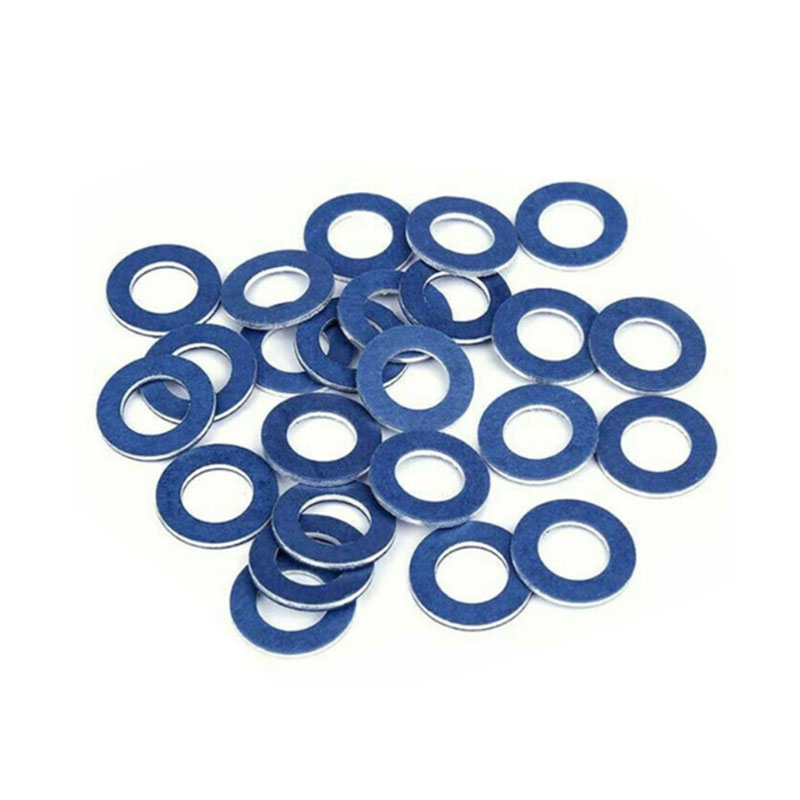shaft seal ring
Understanding Shaft Seal Rings Essential Components for Machinery Integrity
In the realm of mechanical engineering, maintaining the integrity of machinery is paramount for ensuring optimal performance and longevity. One critical component that plays a vital role in this area is the shaft seal ring. Commonly used in various industrial applications, shaft seal rings are designed to prevent the leakage of fluids and contamination of critical machinery parts. This article delves into the functions, types, applications, and maintenance of shaft seal rings.
What is a Shaft Seal Ring?
A shaft seal ring is a type of sealing device that is used to contain fluids within a rotating shaft assembly. It is typically made from durable materials such as rubber, plastic, or metal, which are capable of withstanding various environmental conditions, including extreme temperatures and chemical exposure. The primary function of a seal ring is to provide a barrier that prevents the escape of lubricants and other essential fluids while deterring the ingress of dust, dirt, and other contaminants.
Functions of Shaft Seal Rings
The primary functions of shaft seal rings include
1. Leak Prevention By ensuring a tight fit around the rotating shaft, these seals prevent the loss of lubricants, which is crucial for the smooth operation of machinery.
2. Contamination Control Shaft seal rings act as barriers against external contaminants that could cause wear and tear on mechanical components.
3. Pressure Maintenance In applications where pressure is a critical factor, seal rings help maintain the required pressure levels, contributing to overall system efficiency.
4. Vibration Reduction A properly installed seal can also help reduce vibration within the machinery, contributing to smoother operation and less wear over time.
Types of Shaft Seal Rings
Shaft seal rings come in various types, each designed for specific applications and operating conditions
. Some common types include1. Lip Seals These seals feature a flexible lip that provides a tight sliding contact with the shaft. They are ideal for rotary applications and can handle a variety of fluids.
2. O-Rings Simple yet effective, O-rings can seal static and dynamic applications at low pressures and are made from various materials to suit different fluid types.
3. Mechanical Seals Typically used in pumps and compressors, mechanical seals consist of two flat faces that create a seal when pressed together and can handle higher pressures than lip seals.
shaft seal ring

4. V-Rings These are used primarily in applications where contamination is a concern, as they provide a high degree of protection against dust and debris.
Applications of Shaft Seal Rings
Shaft seal rings are utilized in a wide range of industries, including
- Automotive In vehicles, seal rings are used in engines, transmissions, and differentials to prevent oil leakage and protect sensitive components.
- Manufacturing Industrial machines often rely on shaft seals to ensure smooth operation by preventing lubricant loss and contamination.
- Aerospace In aircraft systems, seals are critical for maintaining hydraulic systems and preventing fuel leaks.
- Marine Boats and ships employ shaft seals in their propulsion systems to protect against water ingress and lubricant loss.
Maintenance of Shaft Seal Rings
Regular maintenance and inspection of shaft seal rings are essential for ensuring their effectiveness and prolonging the life of machinery. Here are some tips
1. Routine Checks Periodically inspect seal rings for signs of wear or damage. Look for leaks around the seal area and address any issues immediately.
2. Proper Installation Ensure that seal rings are installed correctly to avoid premature failure. Follow manufacturer guidelines for fitting and alignment.
3. Material Compatibility Use seal materials that are compatible with the fluids they will encounter. This helps prevent chemical degradation and extends seal life.
4. Environmental Considerations Consider the operating environment, as factors like temperature extremes, exposure to chemicals, and vibration can all impact seal performance.
Conclusion
In conclusion, shaft seal rings are indispensable components within various machines and systems, playing a crucial role in maintaining efficiency, preventing leaks, and protecting against contamination. Understanding their functions, types, and maintenance needs can significantly enhance the operational integrity of machinery across multiple industries. Whether in automotive, aerospace, or industrial applications, investing in high-quality shaft seal rings and adhering to best maintenance practices is essential for ensuring long-lasting performance and reliability.
-
Understanding the Front Main Engine Seal: Purpose, Maintenance, and Installation
News Jul.29,2025
-
Understanding O-Rings and Seal Rings: Types, Applications, and Custom Solutions
News Jul.29,2025
-
Understanding Crankshaft Oil Seals: Rear Seals, Pulley Seals, and Their Role in Engine Integrity
News Jul.29,2025
-
The Importance of Front and Rear Crankshaft Seals in Engine Performance and Oil Management
News Jul.29,2025
-
Crank Oil Seals: Functions, Types, and Cost Considerations in Engine Maintenance
News Jul.29,2025
-
A Comprehensive Guide to O-Rings and Seals: Types, Materials, and Global Applications
News Jul.29,2025
-
Mastering Diesel and Performance Engine Maintenance: A Guide to Critical Oil Gaskets
News Jul.28,2025
Products categories















